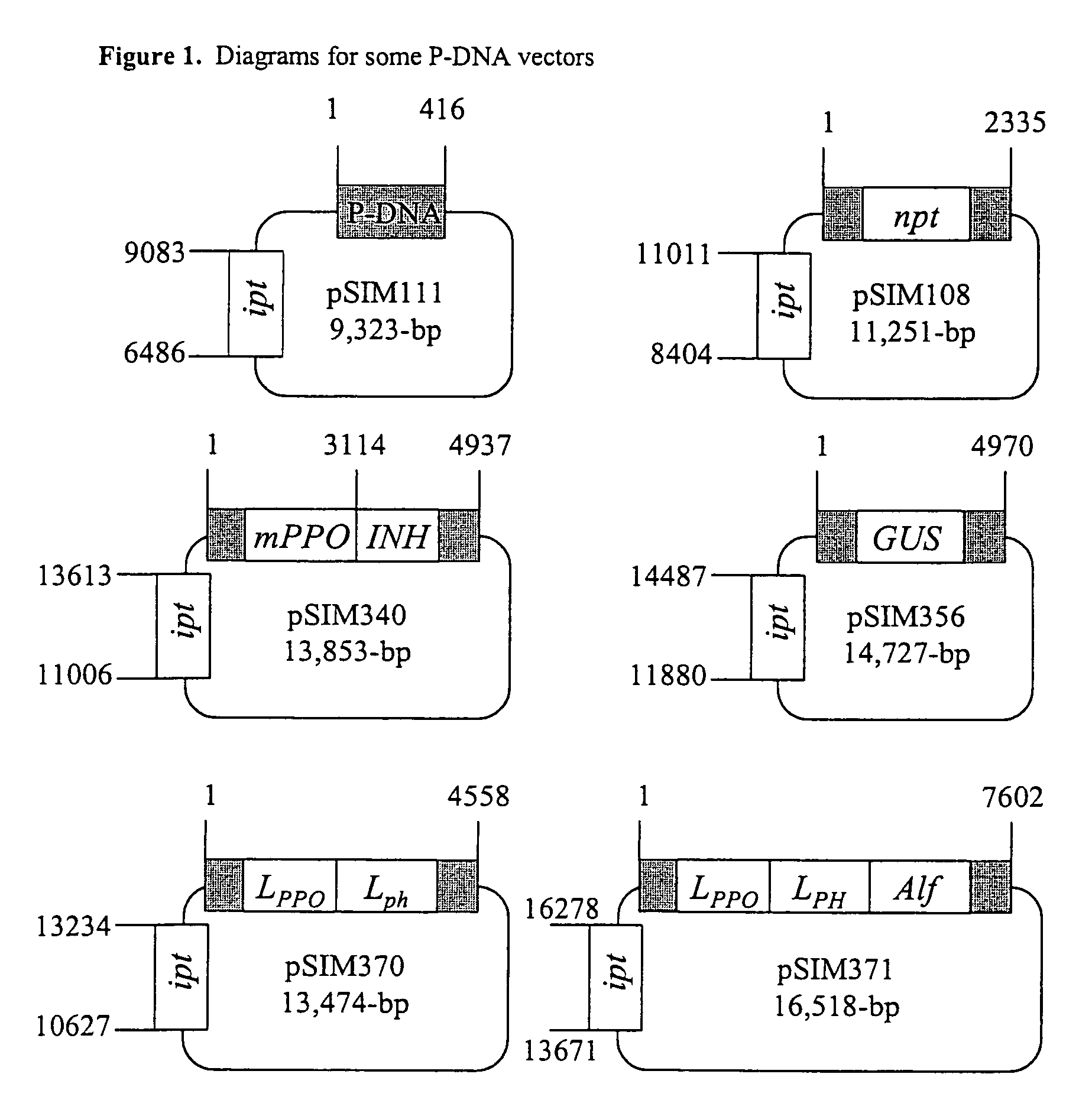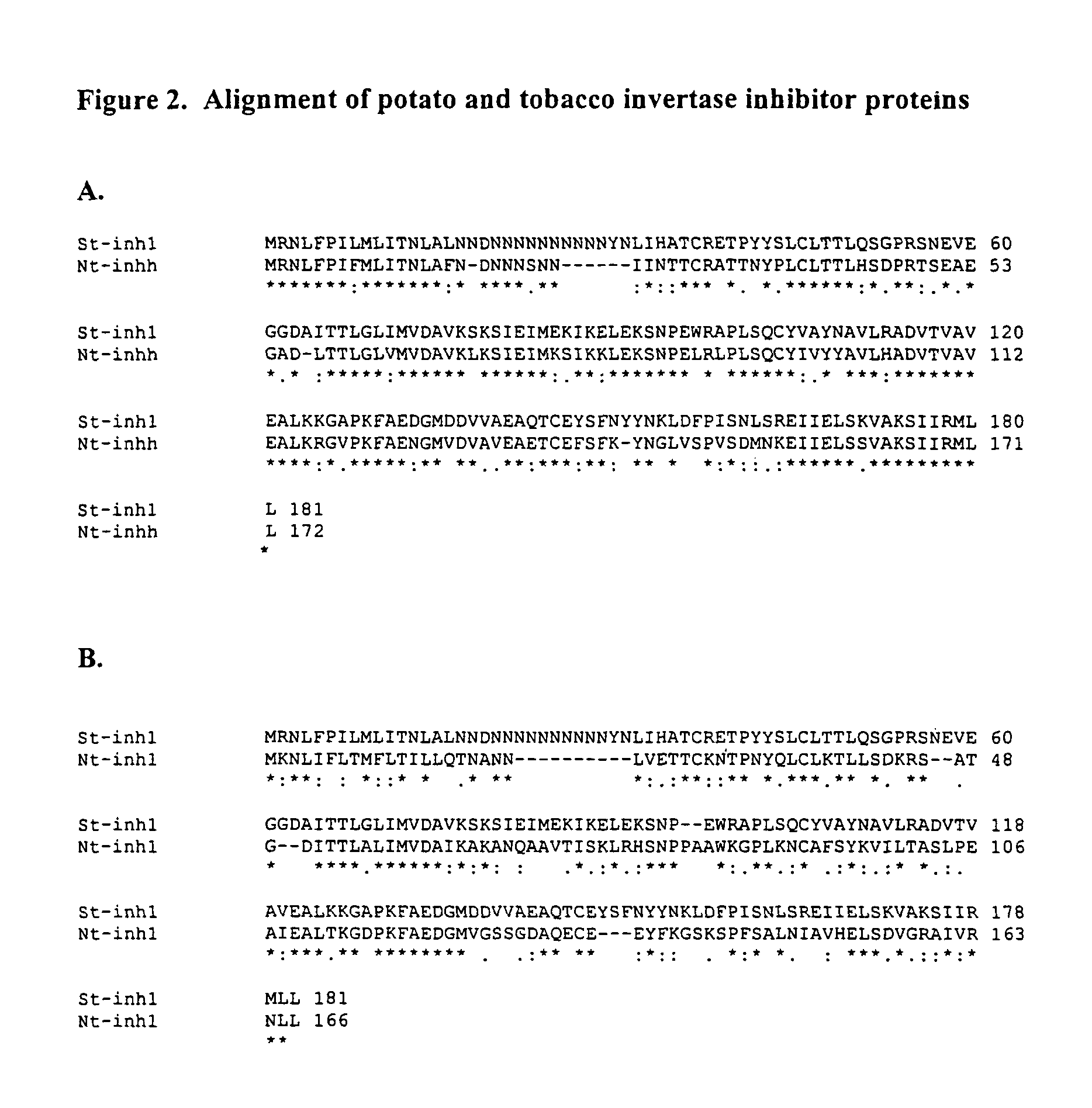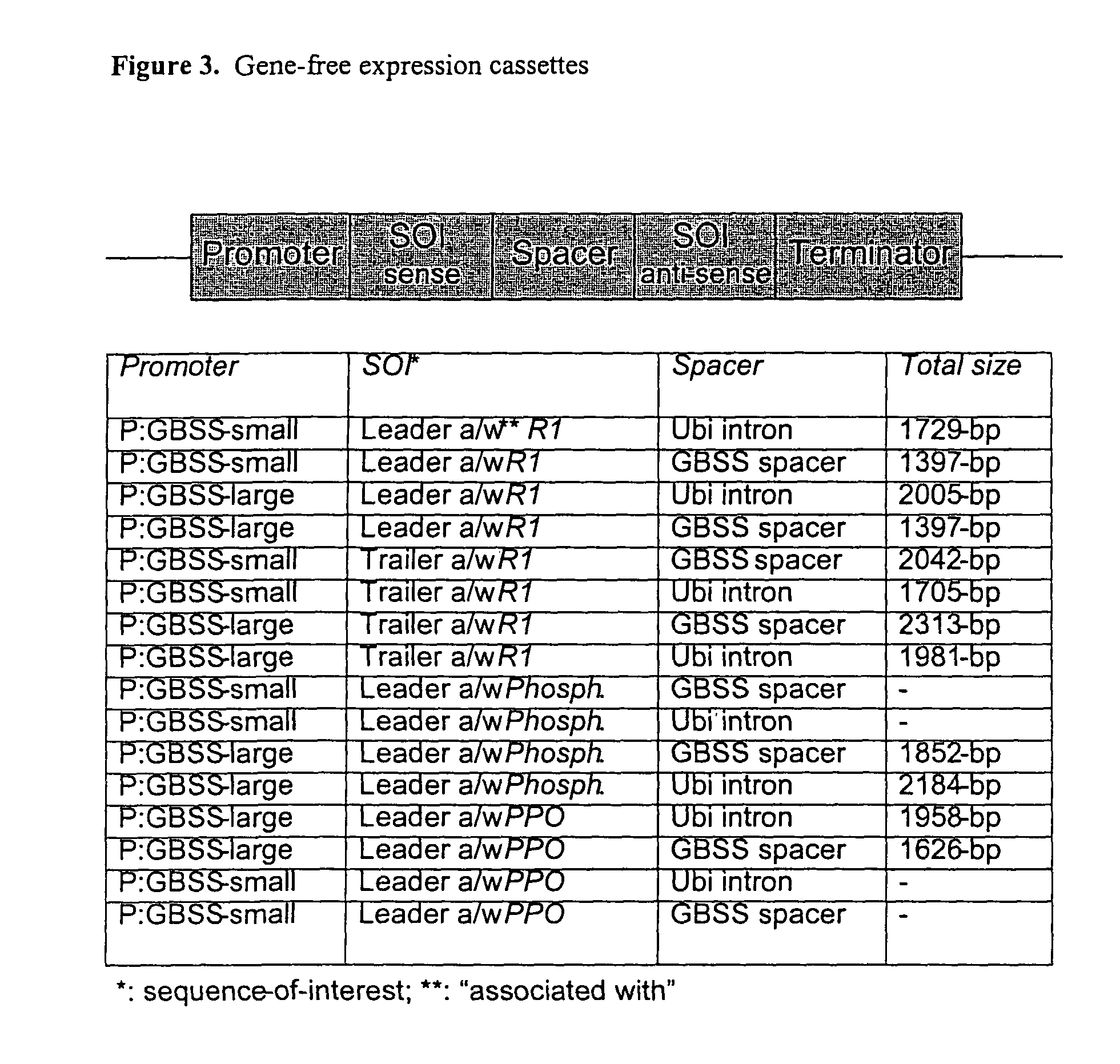Precise breeding
- Summary
- Abstract
- Description
- Claims
- Application Information
AI Technical Summary
Benefits of technology
Problems solved by technology
Method used
Image
Examples
Example
Example 1
Cloning of P-DNAs
[0326]This example demonstrates that T-DNA borders are specific to Agrobacterium. It also shows that plants contain T-DNA border-like sequences, and it provides the sequence of DNA fragments isolated from potato and wheat that are delineated by such border-like sequences.
[0327]Conventional transformation systems use Agrobacterium-derived T-DNAs as vehicles for the transfer of foreign DNA from Agrobacterium to plant cells (Schilperoort et al., U.S. Pat. No. 4,940,838, 1990). Although T-DNAs usually comprise several hundreds of basepairs, delineated by a left-border (LB) and right-border (RB) repeat, they can also merely consist of such borders. The T-DNA borders play an essential role in the DNA transfer process because they function as specific recognition sites for virD2-catalyzed nicking reaction. The released single stranded DNA, complexed with Agrobacterial virD2 and virE2, is transferred to plant cell nuclei where it often integrates successfully into ...
Example
Example 2
Tobacco Transformation with P-DNA Vectors
[0341]This Example demonstrates that, despite structural (sequence divergence) and functional (transformation frequencies) differences between P-DNA termini and T-DNA borders, a P-DNA can be used in a similar way as a T-DNA to transfer DNA from Agrobacterium to tobacco cells.
[0342]A T-DNA-free vector that can be maintained in both E. coli and A. tumefaciens was obtained by removing the entire T-DNA region of the conventional binary vector pCAMBIA1301 (Cambia, AU). This was accomplished by simultaneously ligating a 5.9 kb SacII-SphI fragment of pSIM1301 with 2 fragments amplified from pCAMBIA1301 using the oligonucleotides pairs: 5′-CCGCGGTGATCACAGGCAGCAAC 3′ (SEQ ID NO. 58) and 5′-AAGCTTCCAGCCAGCCAACAGCTCCCCGAC-3′ (SEQ ID NO. 59), and 5′-AAGCTTGGCTACTAGTGCGAGATCTCTAAGAGAAAAGAGCGTTTA-3′ (SEQ ID NO. 60), and 5′-GCATGCTCGAGATAGGTGACCACATACAAATGGACGAACGG-3′ (SEQ ID NO. 61), respectively.
[0343]To make it possible to screen against backbon...
Example
Example 3
Potato Transformation with P-DNA Vectors
[0349]This Example demonstrates that a P-DNA can be used in a similar way as a T-DNA to transfer DNA from Agrobacterium to potato cells.
[0350]Potato transformations were carried out by infecting stem explants of 4-week-old in vitro grown Russet Ranger plantlets with Agrobacterium strains according to the following procedure. Ten-fold dilutions of overnight-grown cultures were grown for 5-6 hours, precipitated for 15 minutes at 2,800 RPM, washed with MS liquid medium (Phytotechnology) supplemented with sucrose (3%, pH 5.7), and resuspended in the same medium to an OD600 nm of 0.2. The resuspended cells were then used to infect 0.4-0.6 mm internodal potato segments. Infected stems were incubated for 2 days on co-culture medium (1 / 10 MS salts, 3% sucrose, pH 5.7) containing 6 g / L agar at 22° C. in a Percival growth chamber (16 hrs light) and subsequently transferred to callus induction medium (CIM, MS medium supplemented with 3% sucrose ...
PUM
| Property | Measurement | Unit |
|---|---|---|
| Fraction | aaaaa | aaaaa |
| Time | aaaaa | aaaaa |
| Volume | aaaaa | aaaaa |
Abstract
Description
Claims
Application Information
 Login to View More
Login to View More - R&D Engineer
- R&D Manager
- IP Professional
- Industry Leading Data Capabilities
- Powerful AI technology
- Patent DNA Extraction
Browse by: Latest US Patents, China's latest patents, Technical Efficacy Thesaurus, Application Domain, Technology Topic, Popular Technical Reports.
© 2024 PatSnap. All rights reserved.Legal|Privacy policy|Modern Slavery Act Transparency Statement|Sitemap|About US| Contact US: help@patsnap.com










